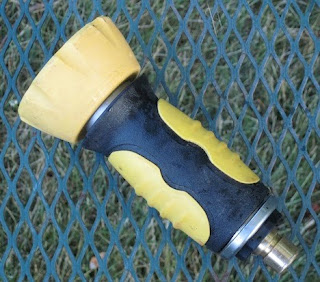Funny how sometimes think you know is wrong. I thought I was identifying some lawn rodents correctly for years, but now I'm not as certain.
I know what a mole looks like without much doubt, so I can kind of not worry about mistaken identity there. They are simply bigger, have almost invisible eyes, and large paws. I have a few around (Marley caught one once), but not many. They tend to stay in their tunnels and leave and occasional, well, "molehill". They eat only underground grubs and worms. I begrudge them the worms (which I love for soil health) but applaud their taste for grubs. They do have a side effect I will mention later.
So my problem is mice, voles, and shrews. I forgot about shrews. It's like when you have a lot of squirrels, you don't always notice the chipmunks. So, after reading some articles of the differences between mice and voles, I thought I could tell them apart mostly through feeding habits and habitats.
Mice are not a real problem to a gardener. They live above ground (though nest in small burrows). They mostly just eat fallen flowerseeds. And easy to identify by their long tails, prominent hairless ears, and plump round bodies. If they get into the house, they are easy to control. Cats and (in tight places like under the oven) traps take care of any invaders
So I thought that left just the voles. And it made sense. Voles use mole tunnels where available or dig their own near the surface. They eat plant roots below-ground and stems at ground level. They have short tails like moles but they are smaller. They seldom invade houses (no plant roots to eat). And the images I saw years ago seemed to show them as slender, chisel-toothed, and small-eared (as is suitable for travelling through tunnel). And the little rodents that the cats brought up on the deck (for play or as "gifts" to me) matched that description perfectly.
But as I decided to post about the little evil things, I looked at pictures of voles. They didn't match my recollection of previous images.
This is not what the cats have been catching!
Allow me to interject. I DO indeed have some moles, some field or house mice, and many voles. I have come across a couple of molehills. I have trapped mice in the house and the shed (a natural wintering place where I have found nests and they have chewed into corn gluten fertilizer bags).
I know I have voles because of the shallow surface tunnels and them eating unprotected tulip and hyacinth bulbs by digging tunnels belowground and also digging down from the surface. They also leave small clean holes in tunnels for surface access. Moles don't do that and mice don't tunnel.
I have no idea why shrews completely escaped my mind for many years. Sometimes, you just miss things. It's embarrassing to miss basic stuff, but it happens. I think the cats are catching shrews.
Sure looks like what they have been catching to me...

According to Wikipedia,shrews forage for seeds, insects, nuts, worms, and a variety of other foods in leaf litter and dense vegetation, living both over and under ground. They say (to my surprise), shrews are not even rodents, being more related to hedgehogs.
I know a lot of "stuff". But what I DON'T know is so much greater...
A wise person once said that it isn't what you know that gets you in trouble, it's what you think you know that isn't true. It wouldn't be the first time for me. I thought I knew my yard's rodents; I didn't. Live and learn.
If so, they have the perfect place here other than the cats. My back yard is semi-wild, mostly organic, covered with leaf litter and groundcover plants and brambles (so there are rarely disturbed by my activities). I have many large seed-bearing plants (hollies, berries, and nandinas), rich undisturbed soil (lots of earthworms), and many small-rooted plants.
I gather that they (like voles) use existing tunnels, but usually live aboveground (or The Mews wouldn't be catching them).
I don't actually mind what rodent or shrew The Mews catch. All are annoying in some way. I respect a certain degree of lethality in them and glad to see that Laz has joined the club (Ayla used to be a great "mouser" but has retired in her senior years).
But I should probably retire "mousies" as meaning all small furry mammals. Convincing them to change the term might be more difficult. It's their blog, after all...
But for myself, I will try to remember the differences. Shrews are not mice or voles and they don't eat my plants (but like moles, they do eat my worms). Mice aren't a garden problem, but voles are. Voles don't invade the house, but mice do (but The Mews get them). I don't have many moles or mice, but I do have a lot of voles and shrews.
And the moles aren't much of a problem themselves, but the tunnels they build are highways for the voles and shrews.
So my original plan to reduce the moles that make the tunnels the voles (and now shrews) use is still good. Mole repellent (industrial castor oil) and stomping the tunnels flat and milky spore powder (organic) to kill off the grubs so the moles have less food is still the way to go.
Just that The Mews are catching shrews, not voles... I THINK.










